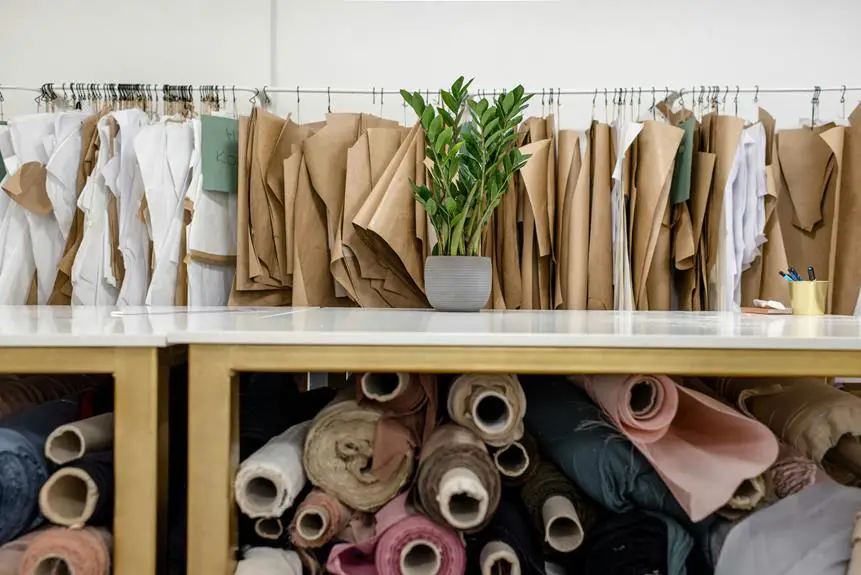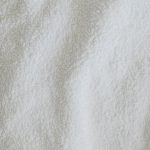When you think about Oxford fabric, you might picture the shirts hanging in your closet, but have you ever considered the journey that brought it there? It all starts on farms where specific cotton varieties are carefully cultivated. From the meticulous harvesting to the spinning techniques that enhance its durability, each step plays a crucial role in the fabric's quality. As you explore its evolution, you'll find that the story of Oxford fabric intertwines with sustainable practices and modern fashion trends. What's next in this fabric's fascinating transformation?
Table of Contents
Origins of Oxford Fabric
Oxford fabric traces its origins back to the 19th century, where it was first crafted in England for durability and versatility. This unique fabric emerged as a solution for both practicality and style, making it ideal for a range of garments. You might recognize it in shirts, trousers, and even upholstery, as it seamlessly blends comfort with a polished appearance.
The creation of Oxford fabric involved a specific weaving technique, often using a mix of cotton and synthetic fibers. This method not only enhanced its strength but also gave it a distinctive texture. As you explore the fabric, you'll notice its characteristic basket weave pattern, which adds depth and character to the material.
Oxford fabric gained popularity in the late 1800s, particularly among the upper class, who appreciated its elegance and durability. Over time, its appeal spread beyond formal wear, finding a place in everyday fashion. Today, Oxford fabric is synonymous with smart-casual attire, effortlessly transitioning from office to social events.
Understanding its rich history gives you a deeper appreciation for this timeless fabric that continues to thrive in the fashion world.
The Farming Process
The journey of Oxford fabric begins in the fields, where cotton plants are meticulously cultivated for their fibers. Farmers choose specific cotton varieties based on climate and soil conditions, ensuring optimal growth. Once planted, these cotton seeds sprout into lush green plants. You'll see them thriving under the sun, absorbing nutrients and moisture, crucial for producing high-quality fibers.
As the plants mature, they're monitored for pests and diseases, which can impact yield. Once the cotton bolls, which house the fibers, burst open, it's time for harvesting. This is often done by machines that efficiently gather the cotton while minimizing damage. After harvesting, the cotton undergoes ginning, a process that separates the fibers from the seeds.
Here's a quick overview of the farming process:
| Step | Description | Duration |
|---|---|---|
| Planting | Seeds are sown into prepared fields | 1-2 weeks |
| Growth | Plants grow and develop over the season | 5-6 months |
| Harvesting | Cotton bolls are collected and processed | 1-2 weeks |
| Ginning | Fibers are separated from seeds | 1 week |
| Baling | Compressed into bales for transportation | 1-2 days |
This meticulous process lays the groundwork for creating the fabric you love.
Spinning and Weaving Techniques
After ginning, the cotton fibers are spun into yarn using various techniques that enhance their strength and texture.
You'll notice that the two primary methods used are ring spinning and open-end spinning. Ring spinning creates a finer, smoother yarn, giving the fabric a luxurious feel. This method involves twisting the fibers tightly, which produces a strong, durable yarn ideal for high-quality Oxford fabric.
On the other hand, open-end spinning, also known as rotor spinning, offers a quicker, more cost-effective approach. It creates a bulkier yarn with a slightly less refined texture but maintains good strength and durability. Depending on the desired characteristics of the final fabric, manufacturers choose the spinning technique that best suits their needs.
Once the yarn is spun, it's time for weaving. You'll find that Oxford fabric is typically woven in a basket weave pattern, which combines two yarns in both the warp and weft directions.
This technique not only adds strength but also creates that distinctive, textured appearance. In this way, the spinning and weaving techniques work hand in hand, transforming raw cotton fibers into the stylish, versatile Oxford fabric you see today.
Sustainable Practices in Production
Sustainable practices in the production of Oxford fabric focus on minimizing environmental impact while ensuring high-quality outcomes. You'll find that manufacturers are increasingly adopting eco-friendly methods, from sourcing raw materials to the final stages of production. By using organic cotton and recycled polyester, producers not only reduce their carbon footprint but also promote responsible consumption.
Here's a quick look at some sustainable practices in Oxford fabric production:
| Practice | Description |
|---|---|
| Organic Sourcing | Using cotton grown without synthetic pesticides or fertilizers. |
| Water Conservation | Implementing techniques that reduce water usage during dyeing and finishing processes. |
| Energy Efficiency | Utilizing renewable energy sources in manufacturing facilities. |
| Waste Reduction | Developing a closed-loop system to recycle fabric scraps and minimize landfill waste. |
Oxford Fabric in Modern Fashion
Oxford fabric has become a staple in modern fashion, offering a blend of durability and style that suits various trends and occasions.
You'll find this versatile material in everything from casual wear to more upscale attire. Its unique texture and weight give garments a structured yet comfortable feel, making it a go-to choice for fashion-forward individuals.
Consider these features that make Oxford fabric a must-have in your wardrobe:
- Versatility: Works well for shirts, dresses, and even accessories.
- Durability: Withstands wear and tear, making it perfect for everyday use.
- Breathability: Keeps you comfortable in various climates, ideal for layering.
When you choose Oxford fabric, you're not just opting for a look; you're investing in quality.
Pair an Oxford shirt with tailored trousers for a polished look or dress it down with jeans for a laid-back vibe.
No matter how you style it, Oxford fabric elevates your outfit, ensuring you always look effortlessly chic.
Frequently Asked Questions
What Is the History Behind the Name "Oxford" Fabric?
The name "Oxford" fabric originates from the University of Oxford in the 19th century. It was designed for varsity shirts, combining durability and a soft texture, making it popular for casual and formal wear alike.
Can Oxford Fabric Be Recycled After Use?
Yes, you can recycle Oxford fabric, but it depends on its composition. If it's 100% cotton, it's easier to recycle. Check local facilities for guidelines, as not all recycling centers accept fabric materials.
How Does Oxford Fabric Compare to Other Fabrics?
Oxford fabric's durability and versatility make it stand out compared to other fabrics. It's generally thicker, offers better resistance to wear, and provides a more polished look, making it ideal for shirts and casual wear.
What Care Instructions Are Recommended for Oxford Fabric Garments?
You should wash oxford fabric garments in cold water and avoid bleach. Tumble dry on low heat or hang to dry. Iron on a medium setting if needed, but always check the label for specific instructions.
Are There Any Common Misconceptions About Oxford Fabric?
You might think all oxford fabric is the same, but that's not true. It's often confused with other materials, and some assume it's only for casual wear when it can be quite versatile.
- How Does Ring Spun Cotton Affect Garment Fit and Shape Retention? - August 13, 2024
- What Are the Challenges in Producing Ring Spun Cotton? - August 13, 2024
- Is Ring Spun Cotton Suitable for Plus-Size Clothing? - August 13, 2024







